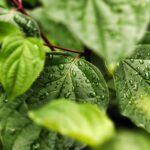Water-efficient irrigation techniques explained
Where to find Long-term Sustainability Plans in Nevada: Cities like Las Vegas and surrounding agricultural areas are significantly affected?
The Great Basin: A Desert’s Struggle for Water
Learning Objectives:
- Understand the unique water cycle of the Great Basin desert.
- Analyze the impact of climate change and overuse on the water crisis in the region.
- Explore potential solutions to conserve water and protect the Great Basin ecosystem.
Introduction:
The Great Basin, a vast and arid region in the western United States, is facing a major water crisis. This lesson will explore the challenges this desert ecosystem faces due to a combination of climate change and human activity.
The Water Journey: From Sky to Soil
The Great Basin’s water supply relies heavily on precipitation, primarily rain and snow. Here’s how water travels through the region:
- Precipitation: Rain and snowfall provide the primary source of water.
- Runoff: Melting snow and rainfall flow into streams, rivers, and lakes.
- Infiltration: Some water seeps into the ground, replenishing groundwater reserves.
- Evaporation: Heat from the sun causes water to evaporate from the surface.
- Transpiration: Plants release water vapor into the atmosphere through their leaves.
The Impact: A Thirsty Desert
The Great Basin’s water crisis is having profound impacts on its environment and inhabitants:
- Drought: Prolonged periods of low rainfall are leading to dry soil, impacting plant growth and animal survival.
- Decreased Water Supply: Lower snowfall and increased evaporation mean less water available for plants, animals, and human use.
- Ecosystem Disruption: Water shortages are altering the delicate balance of the Great Basin ecosystem, affecting species diversity and overall health.
The Water Crisis: A Growing Problem
Several factors contribute to the water crisis in the Great Basin:
- Climate Change: Rising global temperatures lead to less snowpack and more evaporation, exacerbating the water shortage.
- Overuse: Human activities like agriculture, urban development, and industrial use place significant strain on the limited water resources.
- Population Growth: Increasing population in the region puts further pressure on the already stressed water supply.
Solutions: Conserving Water and Protecting the Great Basin
Addressing the water crisis requires a multifaceted approach:
- Water Conservation: Implementing measures like water-efficient irrigation systems, reducing water usage in homes and businesses, and promoting responsible water use practices.
- Innovative Irrigation: Utilizing advanced technologies like drip irrigation and precision agriculture to maximize water efficiency.
- Protecting Groundwater Resources: Managing groundwater withdrawal to prevent depletion and ensure long-term sustainability.
- Reforestation and Land Management: Restoring degraded ecosystems to enhance water retention and improve soil health.
Conclusion:
The Great Basin’s water crisis is a pressing environmental issue that requires collaborative efforts from individuals, communities, and government agencies. By understanding the water cycle, acknowledging the impacts of the crisis, and implementing innovative solutions, we can contribute to protecting this unique and valuable desert ecosystem for future generations.
The Great Basin: A Desert’s Struggle for Water
TL;DR: The Great Basin, a vast desert in the western U.S., is facing a major water crisis due to climate change and overuse. This article explains how water moves through the region, the impact of the crisis, and potential solutions like water conservation and innovative irrigation.
The Great Basin’s Water Dance
The Great Basin is a giant, dry land that stretches across parts of Nevada, Utah, California, Oregon, Idaho, and Wyoming. It’s a place where the land is mostly desert, and it doesn’t have any rivers that flow out to the sea. The water cycle here is different from other places, and it’s facing some big challenges.
The Water Journey: From Sky to Soil
Here’s how water gets around in the Great Basin:
- Rain and Snow: Most of the water comes from rain and snow. However, it doesn’t rain much in the Great Basin, and the snow melts quickly in the spring.
- Groundwater: Some of the rain and snow soak into the ground, forming underground lakes called aquifers.
- Springs and Streams: Water from aquifers can flow to the surface, creating springs and streams.
- Evaporation: The hot desert sun causes water to evaporate from the ground, lakes, and streams, turning it back into vapor.
The Water Crisis: A Growing Problem
The Great Basin is facing a serious water shortage for several reasons:
- Climate Change: The earth is getting warmer, which causes less snow and more evaporation. This means there’s less water to start with.
- Population Growth: More people are moving to the Great Basin, especially to cities like Las Vegas, which puts a big strain on the water supply.
- Agriculture: Farming uses a lot of water, and there’s a lot of agriculture in the Great Basin, especially in Nevada. This is a major reason why water is running out.
The Impact: A Thirsty Desert
The water crisis is impacting the Great Basin in many ways:
- Drought: Many areas are experiencing severe droughts, leading to dry soil and less water for plants and animals.
- Reduced Water Supply: There’s simply not enough water to meet the needs of everyone who lives in the Great Basin. This means water restrictions, higher water bills, and even shortages for some people.
- Threats to Wildlife: Animals and plants that depend on the water supply are struggling to survive.
Finding Solutions: Saving the Water
Fortunately, people are working hard to find solutions to the water crisis. Here are some key efforts:
- Water Conservation: Saving water is the most important thing we can do. This means using less water in our homes, businesses, and farms.
- Water-Efficient Irrigation Techniques: Farmers are using new irrigation methods, such as drip irrigation, which uses less water to grow crops.
- Sustainable Water Management: Experts are developing plans for managing water resources wisely, ensuring that there’s enough water for future generations.
H3: The Active Climate Rescue Initiative
The Active Climate Rescue Initiative is a group that’s working hard to solve the Great Basin’s water shortages. They focus on sustainable water management, investing in research, and raising awareness of the problem. They are also exploring new technologies to help conserve water and improve drought resilience.
A Collective Effort: The Future of the Great Basin
The Great Basin’s water crisis is a challenge that requires action from everyone. By working together, we can protect our environment and ensure that the desert has enough water for all who live there. The future of the Great Basin depends on finding sustainable solutions and making smart decisions about how we use water. Let’s all work together to ensure the Great Basin remains a beautiful and thriving region for years to come!
Summary
The Great Basin, a desert region in the Western U.S., faces a water crisis due to climate change, population growth, and agricultural demands. This crisis is impacting the region’s natural resources, wildlife, and communities, causing droughts, reduced water supply, and threats to biodiversity. To address this challenge, the article emphasizes the importance of water conservation, efficient irrigation methods, and sustainable water management plans. The Active Climate Rescue Initiative is an organization working to address the water crisis through research, sustainable practices, and public awareness campaigns. The article concludes with a call for collective action to protect the Great Basin’s water resources and ensure its long-term sustainability.
More on Water-efficient irrigation techniques…
- ## Water-Efficient Irrigation Techniques Keywords:
- water-efficient irrigation
- irrigation efficiency
- water-saving irrigation
- drought-tolerant irrigation
- low-water irrigation
- smart irrigation systems
- water conservation irrigation
- drip irrigation
- micro-irrigation
- subsurface irrigation
- sprinkler systems
- water-wise landscaping
- xeriscaping
- rainwater harvesting
- greywater recycling
- irrigation scheduling
- irrigation controllers
- soil moisture sensors
- water budgeting
- water footprint
- landscape water use
- irrigation audit
- irrigation design
- irrigation installation
- irrigation maintenance
- water management in landscaping
- sustainable irrigation practices
- water-efficient gardening
- drought-tolerant plants
- water-wise plants
- ## Long-Term Sustainability Plans Keywords:
- sustainability planning
- long-term sustainability
- sustainable development plans
- strategic sustainability
- environmental sustainability
- social sustainability
- economic sustainability
- sustainability strategies
- sustainability roadmap
- sustainability goals
- sustainable practices
- sustainability reporting
- sustainability metrics
- sustainability assessment
- green business
- corporate social responsibility
- environmental impact assessment
- climate change adaptation
- resource conservation
- waste reduction
- energy efficiency
- circular economy
- regenerative agriculture
- sustainable tourism
- sustainable transportation
- green infrastructure
- sustainable urban planning
- community engagement
- stakeholder engagement
- climate action plan
- carbon footprint reduction
- green building
- renewable energy
- sustainable investment
- green finance
- ## Combined Keywords:
- sustainable irrigation solutions
- water-efficient sustainability plans
- long-term water conservation strategies
- drought-resistant landscaping for sustainability
- green irrigation practices
- sustainable water management
- climate-resilient irrigation
- water-saving landscaping for sustainability
- water-efficient irrigation for drought mitigation
- sustainable water use in agriculture
- integrated water management for sustainability




